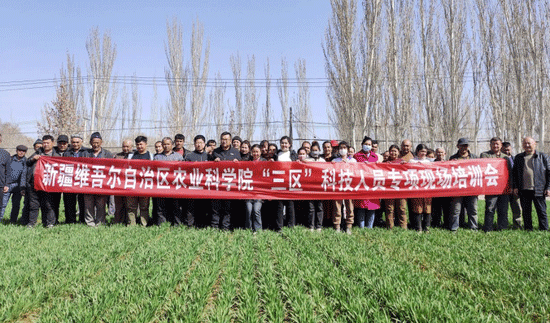Smart Farming in Action: Shule County Trains Farmers in Modern Wheat Cultivation Techniques
As China accelerates its efforts toward rural revitalization, Shule County in the Xinjiang Uyghur Autonomous Region is putting agricultural science into practice where it matters most—in the fields. This spring, the work team from the Xinjiang Academy of Agricultural Sciences stationed in Yakexilake Village, Kumusilike Township, led a highly targeted training session for local wheat growers, with a focus on two critical areas: weed management and water-fertilizer integration.
The training was timed perfectly to address the critical spring window for weed control in winter wheat, when young crops are most vulnerable to competition. Across China, weeds like Avena fatua, Phalaris minor, and Chenopodium album have become increasingly problematic, especially under warming spring temperatures and evolving herbicide resistance.
Tackling Weeds with Knowledge and Precision
During the training, experts delivered detailed explanations on:
- Types of common wheat field weeds
- Weed identification techniques
- Growth patterns and infestation cycles
- Safe and effective herbicide use
To enhance understanding, the trainers conducted on-site demonstrations of herbicide mixing, calibration, and uniform spraying practices. Local farmers actively participated, noting that the sessions gave them clear, practical knowledge that directly addressed their field-level challenges.
According to the Ministry of Agriculture and Rural Affairs, weed-related yield losses in wheat can reach up to 30% if not managed properly—making this type of training critical for food security and farmer incomes.
Promoting Water-Fertilizer Integration: Saving Resources, Boosting Yield
The second major focus of the training was integrated water and fertilizer management—a technique that combines irrigation and fertilization into a single, precise delivery system. This method:
- Reduces water use by 30–50%
- Improves nutrient uptake efficiency
- Minimizes runoff and leaching
- Boosts grain yield and quality
Participants learned about the system’s components, flow rate control, and best practices for various growth stages of winter wheat. Trainers even provided hands-on guidance, ensuring every farmer could operate and troubleshoot the system independently.
These innovations align with national efforts to promote climate-smart agriculture, particularly in arid and semi-arid regions like Xinjiang, where water conservation is essential.
A Model for Rural Transformation
Liu Guohong, head of the village work team, emphasized that this is only the beginning. “We will continue to serve as a bridge between science and the fields,” he said, promising more interactive, farmer-friendly training programs in the months ahead.
The initiative supports the broader vision of China’s rural revitalization strategy, which prioritizes technology transfer, farmer education, and sustainable agricultural development as cornerstones of rural progress.
By bringing modern agronomic knowledge directly to the fields of Shule County, this training program exemplifies how science-led, farmer-centered approaches can deliver immediate, measurable benefits. From protecting winter wheat from weeds to optimizing water and fertilizer use, such efforts are key to boosting productivity, ensuring sustainability, and building rural prosperity for the future.
Error





